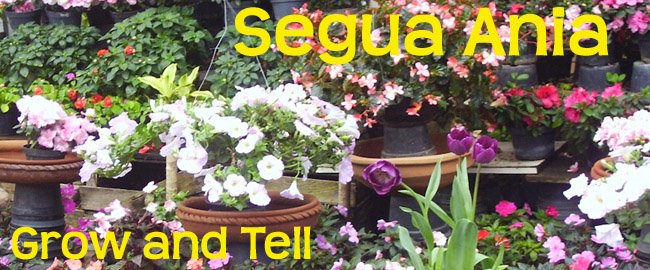
When I started growing plants 6 years ago, I saw the USDA Hardiness Zones map as gospel. Now, I see it for what it is; just another tool to help me along.
There was (or there will be) a press announcement soon, heralding the NEW USDA Hardiness Zones map.
Apparently, with global warming and what not, we need a new one. Not that I needed a press conference to tell me that.
I mean, according to the U.S. Department of Agriculture (USDA), I liven in hardiness zone 6a. This means that the lowest temperature possible where I live, falls between -10 degrees Fahrenheit and -5 degrees Fahrenheit.
The thing is, I can't remember the last time temperatures got that low.
So I went searching for temperature logs. I quickly found out that those are for sale and I did not want to pay.
I can however, find tables that record the average temperatures for my area and according to the National Oceanic and Atmospheric Administration (www.crh.noaa.gov) the average low temperature in January for my area is in the low 20's F.
the Accuweather website (www.accuweather.com) gave me a free sample of record low temperatures for February and they say that the last time the temperature dipped to -7 degrees F. in my area was back in 1996.
And I am not the only one complaining about the map. The people at Arbor Day (www.arborday.org/) contend that my area is now zone 7.
The folks over at Garden.org say that the map is only accurate for the Eastern US:
"...and in the rest of the country (west of the 100th meridian, which runs roughly through the middle of North and South Dakota and down through Texas west of Laredo), the USDA map fails. "
This, they say, it's due to the mountains and Pacific ocean climates. They give as an example, Oregon and Arizona, both of which have Zone 8 parts but have vastly different climates.
It does help to have an agreed-upon point of reference but take it only as a starting point. I think is more important to get to know your local climate really well and take note of changes. Around here, we've had Armadillos for about a decade now. We did not have them in the 1980's, at least not in the numbers we have them now, and I read somewhere that time is running out for our great Cottonwood trees because Fall temperatures have risen.
Happy Gardening.


Hi David;
ReplyDeleteThis is a really good piece of research you have started and the links are useful. You see armadillos and I see things like cardinals nesting higher up the mountains and gray squirrels moving to 1500 feet in elevation. Examples I think, of changes in climate. In 1989, we moved to this house and that first winter it was 35 below for a week. -30 was common back then for a few days but from that point on, it never happened. The change impacts on insect species to and they provide further challenges. Thanks for summarizing this.
George Africa
Vermont Flower Farm
http://vermontflowerfarm.com
The Vermont Gardener
http://thevermontgardener.blogspot.com
Hi David,
ReplyDeleteThank you for stopping by my blog.
Nights will still be dropping below 65 for a while yet so maybe my garlic will surprise me. It sure is growing fast.
George,
ReplyDeleteThere is a definite change going on regarding climate. I just hope that it is a a natural cycle and not, like Al Gore says, a man made, possibly irreversible, trend.
Vermont to me has always been this mythical, magical land of beautiful woods and postcard seasons. I look forward to reading your blog.
Birdie and Tom,
ReplyDeleteI, too wonder what my garlic will taste like compared to the store-bought stuff. And you're right about how fast it grows!